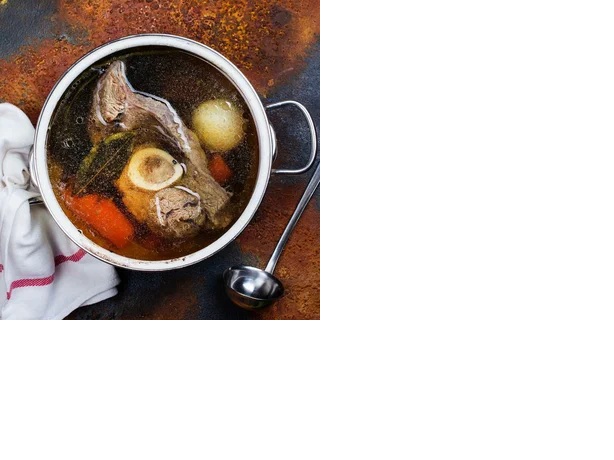Pho soup, originating from Vietnam, has gained international popularity due to its delicious flavor, comforting warmth, and versatility in ingredients. This traditional Vietnamese dish consists of a flavorful broth, rice noodles, fresh herbs, and various protein options such as beef, chicken, or tofu. As it continues to be embraced by people worldwide, understanding the nutritional aspects of pho soup becomes increasingly important. In this comprehensive guide, we’ll delve into the calories, nutrition, and other essential aspects of pho soup, shedding light on its health benefits and considerations.
Understanding Pho Soup
At the heart of pho soup lies a clear, aromatic broth made from simmering bones, meat, herbs, and spices for hours. This meticulous process infuses the broth with depth of flavor and essential nutrients. The broth serves as the foundation of the dish, offering a delicate balance of savory, sweet, and aromatic notes. Alongside the broth, rice noodles provide a comforting texture, absorbing the rich flavors and adding substance to the soup. The hallmark of pho soup is its garnishes – an array of fresh herbs, bean sprouts, lime wedges, and chili slices, which elevate the dish with vibrant colors, textures, and flavors.
Calories and Nutrition
The caloric content of pho soup can vary based on several factors, including the type and quantity of ingredients used, portion size, and cooking methods. On average, a serving of pho soup (approximately one to two cups) typically contains around 300 to 500 calories. However, these numbers are estimates, and actual caloric content may differ depending on individual recipes and variations. Despite its calorie count, pho soup boasts a nutritional profile rich in essential nutrients:
Protein
Protein serves as a fundamental component of pho soup, contributing to muscle repair, immune function, and overall health. Depending on the protein source – whether it’s beef, chicken, or tofu – pho soup provides a substantial amount of protein per serving.
Carbohydrates
Rice noodles, the primary source of carbohydrates in pho soup, offer energy and satiety without adding excess fat. Unlike refined carbohydrates, rice noodles have a relatively low glycemic index, promoting stable blood sugar levels and sustained energy.
Fiber
While not a significant source of fiber, pho soup may contain small amounts from vegetables and herbs added to the broth. Fiber aids in digestion, promotes feelings of fullness, and supports overall gut health.
Vitamins and Minerals
Pho soup abounds with essential vitamins and minerals derived from its ingredients. Vegetables, herbs, and protein sources contribute vitamins A, C, and K, as well as minerals like calcium, iron, potassium, and magnesium. These nutrients play vital roles in various bodily functions, including immunity, bone health, and energy metabolism.
Health Benefits of Pho Soup
Hydration
The high water content in pho soup contributes to hydration, promoting optimal bodily functions and overall well-being.
Protein-Rich
Pho soup provides a substantial amount of protein, essential for muscle repair, growth, and immune function. Protein also aids in satiety, helping to regulate appetite and prevent overeating.
Nutrient-Dense
Packed with vitamins, minerals, and antioxidants, pho soup offers a nutrient-dense meal option that supports overall health and vitality.
Low in Fat
Pho soup is relatively low in fat, particularly when lean protein options are used. This makes it a lighter and healthier choice compared to other high-fat soups or stews.
Gut-Friendly
The combination of broth, vegetables, and herbs in pho soup supports gut health and digestion, thanks to its fiber content and beneficial nutrients.
Considerations
While pho soup offers numerous health benefits, there are some considerations to keep in mind:
Sodium Content
Commercially prepared or restaurant versions of pho soup may be high in sodium due to added salt or flavor enhancers. Opt for homemade or lower-sodium options whenever possible.
Portion Size
Be mindful of portion sizes, as larger servings of pho soup can contribute to excess calorie intake. Stick to appropriate portion sizes to avoid overconsumption.
Allergens
Individuals with food allergies or intolerances should be cautious of potential allergens in pho soup, such as gluten in noodles or soy in certain condiments.
Condiments and Additions
While condiments like hoisin sauce and sriracha enhance flavor, they may also add extra calories, sodium, and sugar. Use them sparingly or opt for healthier alternatives.
Conclusion
Pho soup stands as a testament to the culinary prowess of Vietnamese cuisine, offering a harmonious blend of flavors, textures, and nutrients. Beyond its delicious taste, pho soup provides essential nourishment and numerous health benefits. Whether enjoyed as a comforting meal on a chilly day or as a wholesome option for lunch or dinner, pho soup has rightfully earned its place as a beloved dish around the world. By understanding its nutritional aspects and making mindful choices, you can savor the goodness of pho soup while supporting your overall health and well-being.

